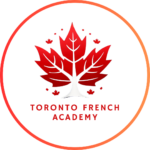Learning French for Canadian PR: The Ultimate Strategy for Low CRS Candidates
Introduction: Why French is the Secret Weapon for Canadian PR Applicants
For thousands of immigration hopefuls each year, the Comprehensive Ranking System (CRS) score becomes an immovable barrier standing between them and their Canadian dreams. If you’ve found yourself stuck in the 430-470 CRS range, constantly watching draws pass you by, learning French for Canadian PR might be the strategic advantage you’ve been overlooking.
Canada’s unique bilingual status creates special opportunities for French speakers in the immigration system. While most applicants focus solely on improving their English test scores, savvy candidates are discovering that developing French language skills can be an easier path to CRS point gains. This comprehensive guide will walk you through every aspect of using French to boost your Canadian PR application, with specific strategies tailored for low CRS candidates.
Understanding the Power of French in Canadian Immigration
The Bilingual Advantage in Canada’s Immigration System
Canada’s commitment to bilingualism is enshrined in law and reflected throughout its immigration policies. The Express Entry system awards additional points for French language ability because:
It demonstrates your potential to integrate into Canadian society
It shows adaptability to multiple regions of Canada
It meets labor market needs for bilingual professionals
Key Fact: According to IRCC data, applicants with French language skills are 37% more likely to receive an ITA at lower CRS scores compared to monolingual candidates.
How French Impacts Your CRS Score
The CRS awards points for French in several ways:
Standalone French Points:
CLB 5: 6 points
CLB 7: 15 points
CLB 9+: 25 points
Bilingual Bonus Points:
Additional 25-50 points when combined with English
Skill Transferability Points:
Up to 50 points for French + education or work experience
Real Impact Example:
A candidate with CLB 7 French and CLB 5 English gains more points (15+25=40) than improving their English from CLB 8 to CLB 9 (which only gives 12 additional points).
Why Learning French for Canadian PR is Your Best Move
If your CRS score isn’t competitive, learning French for Canadian PR could be your breakthrough. Canada’s immigration system actively rewards bilingual applicants, giving French speakers a clear advantage.
Even basic French skills can add 6-12 CRS points, while advanced fluency contributes up to 50 points. For candidates stuck between 430-470 points, this boost often means getting an ITA or facing endless waiting.
3 Key Benefits of Learning French for Canadian PR



The Smart Path to Learning French for Canadian PR
1. Choose the Right French Test: TEF vs TCF Canada
You must take one of these approved tests:
TEF Canada (Test d’Évaluation de Français)
TCF Canada (Test de Connaissance du Français)
French Test Comparison for Canadian PR
| Test | Sections | CLB 5 Minimum | CRS Points Potential |
|---|---|---|---|
| TEF Canada | Reading, Writing, Listening, Speaking | 181 (Reading) | 6-50 points |
| TCF Canada | Reading, Writing, Listening, Speaking | 331 (Reading) | 6-50 points |
Pro Tip: Quebec applicants need TEF/TCF Québec specifically.
2. Fast-Track Your Learning With These Resources
Best Free Tools
Mauril (Official Canadian French app)
Duolingo (Perfect for daily practice)
TV5Monde (Authentic French content)
RFI Français Facile (News in simple French)
Premium Accelerators
Alliance Française (Certified courses)
Rosetta Stone (Immersive method)
Preply (Affordable native tutors)
3. Immersion Techniques That Work
Watch District 31 (popular Quebec drama)
Listen to Balado Québec podcasts
Read Journal de Montréal (Quebec news)
Speak daily via Tandem or HelloTalk
The Step-by-Step Roadmap to Learning French for Canadian PR
Step 1: Setting Realistic Goals Based on Your Timeline
Before diving into French study, you need a strategic approach:
CRS Boost Timelines
| Study Intensity | Time to CLB 5 | Time to CLB 7 | Potential CRS Gain |
|---|---|---|---|
| Casual (1 hr/day) | 6-9 months | 12-15 months | 6-15 points |
| Intensive (3+ hrs/day) | 3-4 months | 6-8 months | 15-25 points |
| Immersive (study + practice) | 2-3 months | 4-6 months | 25-50 points |
Pro Tip: If your CRS is close to recent draw cutoffs (within 20 points), focus on reaching CLB 5 quickly. If you need bigger gains, aim for CLB 7.
Step 2: Choosing the Right French Test
TEF Canada vs TCF Canada: Detailed Comparison
| Factor | TEF Canada | TCF Canada |
|---|---|---|
| Test Structure | More open-ended questions | More multiple choice |
| Speaking Test | Face-to-face or computer | Always computer-delivered |
| Result Timeline | 4-6 weeks | 2-4 weeks |
| Cost | 350−350−450 CAD | 300−300−400 CAD |
| Difficulty | More challenging for beginners | More structured format |
| Acceptance | All provinces + Quebec | All provinces (Quebec has special version) |
Our Recommendation: If you’re starting from scratch, TCF Canada’s more predictable format may be better. If you already have some French background, TEF Canada might allow you to showcase stronger skills.
Step 3: Building Your French Study Plan
The 3-Phase Approach to Learning French for Canadian PR
Phase 1: Foundation Building (Weeks 1-8)
Focus: Basic vocabulary and grammar
Daily Routine:
30 min vocabulary (Anki/Memrise)
30 min grammar (Textbook/online course)
15 min listening (Podcasts/YouTube)
Phase 2: Skill Development (Weeks 9-16)
Focus: Test-specific preparation
Daily Routine:
30 min reading practice
30 min writing exercises
30 min speaking practice (language exchange)
30 min listening comprehension
Phase 3: Test Preparation (Weeks 17-24)
Focus: Mock tests and refinement
Daily Routine:
Full practice test every weekend
Targeted weak area practice
Speaking simulations with tutors
Advanced Strategies for Faster French Learning
1. The Shadowing Technique for Rapid Pronunciation Improvement
This powerful method used by language diplomats:
Find audio with transcript (RFI’s Journal en Français Facile is perfect)
Listen to a sentence
Pause and repeat exactly, mimicking pronunciation and intonation
Gradually increase speed and reduce pauses
Expected Results: 30 minutes daily can improve your speaking score by 1 CLB level in 8-10 weeks.
2. Strategic Vocabulary Building
Focus on these high-impact word categories for Canadian PR:
Immigration terminology (visa, permanent residence, application)
Professional vocabulary (your specific NOC)
Canadian cultural references (poutine, Tim Hortons, hockey)
Government services (healthcare, taxes, education)
3. Leveraging Technology for Immersion
Create a French bubble:
Change phone/computer language to French
Follow Canadian French news accounts
Join Quebec-based Facebook groups
Set GPS to French when driving
CRS Points Breakdown: French for Canadian PR
Canada uses CLB levels to assess French proficiency. Here’s what you need to know:
| CLB Level | TEF Canada Score | CRS Points Added |
|---|---|---|
| CLB 5 | 181-225 | 6-12 points |
| CLB 7 | 271-309 | 15-25 points |
| CLB 9+ | 371+ | 25-50 points |
Key Insight: Reaching CLB 7 typically takes 6-9 months of consistent study but can dramatically improve your CRS position.
Real Success Stories
Case Study: Arjun’s 52-Point Jump
Initial CRS: 441 (English only)
After CLB 7 French: 493
Result: ITA in next Express Entry draw
Case Study: Elena’s Quebec Success
NCLC 5 French + IT background
Approved through Quebec Skilled Worker Program
Now works at Desjardins in Montreal
Avoid These Common Mistakes



Overcoming Common Challenges
Challenge 1: “I Don’t Have Time to Learn French”
Solution: Micro-learning strategies:
5-min vocabulary drills while commuting
Listen to French podcasts during chores
Label household items in French
Use language apps during breaks
Challenge 2: “French Pronunciation is Too Hard”
Solution: Focus on these key sounds first:
The French “R” (practice gargling water first)
Nasal vowels (an, en, in, on, un)
Silent letters (only 50% of letters are pronounced)
Challenge 3: “I’m Not Seeing Progress”
Solution: Implement these tracking methods:
Weekly recording of speaking samples
Vocabulary growth charts
Mock test score tracking
Fluency benchmarks (can you order coffee in French?)
Beyond the Test: Using French for Settlement Success
Learning French for Canadian PR doesn’t stop at getting your points. It continues to provide value:
1. Employment Advantages
Bilingual employees earn 5-20% higher salaries
Federal government jobs require bilingualism
Customer service roles prefer French speakers
2. Education Benefits
Access to French-language schools and programs
Additional scholarships for bilingual students
Opportunities for French teaching positions
3. Community Integration
Easier integration in bilingual cities like Montreal, Ottawa
Access to French cultural events and communities
Better understanding of Canadian history and politics
Your Personalized Action Plan
Month 1-2: Foundation
Enroll in French For PR A1 course
Complete Duolingo French tree
Build 500-word vocabulary base
Month 3-4: Skill Development
Start weekly italki lessons
Begin TEF/TCF preparation book
Join French conversation meetups
Month 5-6: Test Preparation
Take 4 full practice tests
Refine weak areas with tutor
Schedule official exam
Your 90-Day Action Plan
Month 1: Build foundation with Duolingo + Mauril (1 hour/day)
Month 2: Add tutoring (2 sessions/week) + French media
Month 3: Take mock tests and register for official exam
Remember: Consistency beats intensity. Even 30 focused minutes daily yields better results than sporadic long sessions.
Conclusion: Your French-Powered Path to Canada
Learning French for Canadian PR isn’t just about checking a box on your immigration application. It’s about strategically positioning yourself as the type of candidate Canada actively seeks – adaptable, integrated, and valuable to the bilingual workforce. For low CRS candidates, this approach can mean the difference between waiting indefinitely and receiving that life-changing ITA.
Remember that every French word you learn brings you one step closer to Canada. As the famous Quebec proverb says, “Petit à petit, l’oiseau fait son nid” (Little by little, the bird builds its nest). Your Canadian future is worth this investment – start building it today, one French word at a time.
❓ FAQ: Learning French in Brampton
How many points is French really worth for Canadian PR?
The maximum combined value is 74 points (50 for bilingualism + 24 for French skills alone at CLB 10).
Can I claim points for basic French knowledge?
Yes! Even CLB 4 (NCLC 4) gives you 6 points, which could be enough to push you over the cutoff.
Is Quebec the only province where French helps?
No! All provinces value French, but Ontario, New Brunswick and Manitoba have specific streams for French speakers.
What's the fastest way to learn French for Canadian PR?
Immersive study (4+ hours daily) with a focus on test-specific preparation can yield CLB 5 in 8-10 weeks.
Do I need to live in Quebec if I learn French?
Absolutely not! While Quebec is the most French province, all of Canada values bilingualism.
How fast can I reach CLB 5?
With daily practice, most achieve CLB 5 in 3-6 months.
Which test is easier for beginners?
TCF Canada has more multiple-choice questions.
Is Quebec my only option?
No, but Quebec prioritizes French speakers.
Can French compensate for low IELTS?
Yes! French points can offset weaker English scores.

